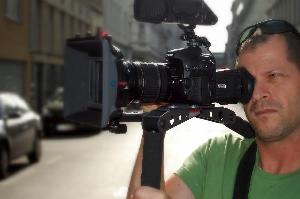A pixel, which stands for “picture element”, is the smallest component of a digital image, and has its own “address” given according to the coordinates. If you zoom into a pixel on your computer screen, you will see a single square point of basic color. To put it simply, a megapixel (MP) is actually one million pixels. When a camera is said to have 10 megapixels it means that there are 10 million pixels in an image taken with the camera at full resolution. This number is the result of multiplying the height and width of the image in pixels.
Just like dots in a newspaper print, each pixel is a sample of an original image. The more dots or pixels you have the more detail you can see in an image. So a higher number of megapixels should mean better images for your use, right?
Not exactly: if your screen size, and your usual print size (if needed you print at all) are smaller than your camera’s megapixels, then those extra megapixels largely go to waste. Below table provides a chart to help figure out how many megapixels you will really need for your printing needs.![]()
A Conventional photo-print is about 5×7 inches, while a blown-up image (say a framed photograph of your family in your home) probably won’t be bigger than 11×14 inches, max. If you look these sizes up in the graph, you will notice that the effective resolution of these print-sizes is about five or six megapixels. Thus, for the average user, anything above five to seven megapixels is irrelevant. On your screen too, a seven megapixel image is so large that if you see it in “actual size” you would only be able to see a small fragment of it. What you see when you “fit-image-to-screen” on your computer is actually much too small to notice the difference between a 5 megapixel image and a 10 megapixel one.
So why do they keep telling us that some cameras are better than others, just because they have more megapixels?
But is this true?
Here is the truth – plain and simple: the notion that cameras with higher megapixels values produce better pictures is a big fat lie. Camera companies and stores all know it, but they continue to exploit our misunderstanding. Advertisements declare a camera’s megapixel rating as though it’s a letter grade, implying that a seven megapixel model is necessarily better than a five megapixel model.
Pogue also conducted an experiment where he asked average viewers to correctly identify the difference between one image printed at five, eight, and 13 megapixels in a 16×24 inch size. Among “several dozen” viewers, only one could correctly identify which of the images was low, medium and high in megapixel count.
To fine-tune the survey, he further polished the test. He got his friend to use a professional camera to take three photos of the same subject, zooming out each time. His friend then cropped out the background until the subject filled the same amount of the frame in each shot. This way, he wound up with nearly identical photos at three different resolutions: 7 megapixels, 10 and 16.7. Of the 50 test subjects, only three could tell the difference.
What really matters?
These days, of course, it’s easy to find a camera that shoots about eight megapixels, and a smartphone that shoots about five megapixels. If you are a casual enthusiast or a utility consumer, then the idea is not to deliberately choose lower megapixels, but instead to be wary of paying more for cameras and phones simply because they offer huge megapixel counts.
High megapixels of course are important in some cases, such as for printing billboards or (more practically) for making image crops. For instance, if you shot a 15 MP image of a 30 person group, a small crop of a single face from the group will be in better quality due to the high MP count.
That said, there are other factors about your camera and its sensor that would contribute equally to the detail and quality of your images as well. Some of these factors are the size of the sensor of your camera, the technology used in that sensor, the quality of color reproduction that your camera provides, the exposure metering, and auto-focus system that the camera has, the dynamic range (the range of darks-to-lights that the camera can capture), the sharpness of the lens, the compression of the image, and the processing power built into camera itself.
That is why a phone and a digital SLR that have the same megapixel count still don’t provide the same results. The phone uses a tiny lens, crams the pixels into a small sensor, and uses less processing power to produce it. On the other hand, a good digital SLR will use a much larger sensor, and a high amount of specialized processing to produce images with greater sharpness, better colors and more accuracy – creating a better-looking image. Between phones too, the same megapixel count can result in a dramatically different result because of the processing power and other technology that the phone allots to the camera.
So if you are looking to buy a camera or a camera phone and don’t need to print or upload huge sized images, a camera with about seven or eight megapixels is more than you will need, and you shouldn’t pay more simply for the megapixels. Look at the results and image reviews of the camera – you can do this online, ask other users, or by trying the camera out on our own. Remember that picture results that you see in the areas specific to your use are a much better way of gauging whether the camera is right for you, rather than simply checking the megapixel count on the box.



Most camera phones are simpler than separate digital cameras. Their usual fixed focus lenses and smaller sensors limit their performance in poor lighting. Lacking a physical shutter, most have a long shutter lag. Flash, where present, is usually weak.